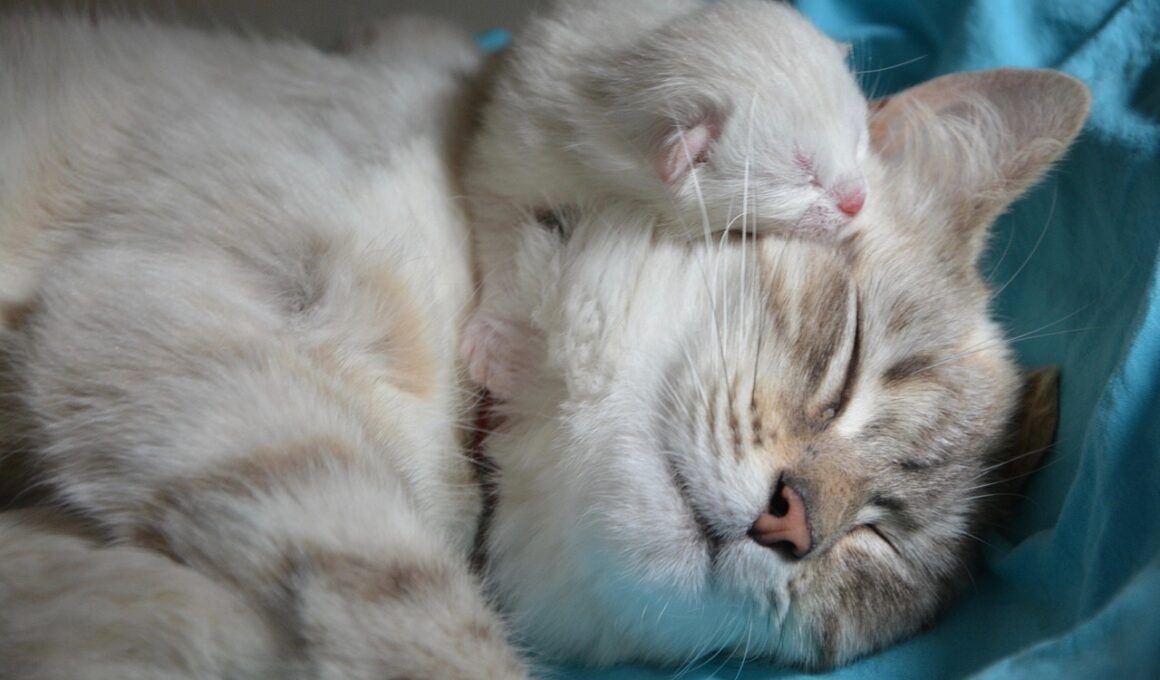How to Slowly Introduce New Foods into Your Kitten’s Diet
Introducing new foods to your kitten’s diet can be a delicate process. It’s essential to transition their meals gradually to prevent digestive upset. Start with a small amount of the new food mixed with their current diet. This should be done over a course of several days. Observe your kitten for any signs of food allergies or intolerances during this transition. A gradual introduction allows their digestive system to adjust to the new ingredients. Consider keeping a record of how they respond to each food item. It’s important to ensure that new foods are high quality and provide the necessary nutrients. Look for options that are specifically formulated for growing kittens, as their nutritional needs differ from adult cats. Variety is key in providing a balanced diet, so don’t hesitate to try different flavors and textures, such as wet or dry food. Always make sure fresh water is available alongside their meals. Consult your veterinarian to confirm that the new food aligns with your kitten’s specific health needs. Feeding time should be a positive experience, making it crucial to approach this methodically.
Each kitten has its unique taste preferences, making it essential to pay attention to their reactions during the food transition process. If your kitten seems hesitant or refuses to eat the new food at first, try mixing a little more of their favorite food into the new product. Gradually decrease the proportions over several days until your kitten is more comfortable with the new option. It’s advisable to introduce one new food at a time to identify any potential reactions. Monitor their behavior closely to ensure they adjust well without digestive issues. Remember, patience is crucial during this phase, as kittens may require more time to adapt to unfamiliar foods. Establishing a feeding routine can also help in making them more comfortable with new meals. In addition to routine, ensure that meals are served in a calm environment, which can reduce anxiety about eating. Always prioritize foods that are suitable for their age and health. Consult your vet for recommendations on high-quality kitten food brands recognized for their balanced nutrition. The right approach can pave the way for a lifetime of healthy eating habits.
Understanding Kitten Nutritional Needs
Proper nutrition is foundational for your kitten’s development and growth. Kittens have specific dietary requirements due to their rapid growth phase, necessitating a higher protein and fat content than adult cats need. When introducing new foods, prioritize those designed specifically for kittens, as they contain the right balance of nutrients to support their well-being. Proteins from sources like chicken, turkey, or fish are excellent options. Additionally, consider examining the ingredient list on packaging to ensure that high-quality sources form the base of the food. Avoid fillers such as corn or wheat, which provide little nutritional value. There’s also an increasing trend toward grain-free diets; however, each kitten is different, so consult with a vet to decide what works best. Monitor your kitten’s weight and growth weekly during the transition to new foods. If they appear to be losing weight or not growing sufficiently, it might warrant immediate consultation with your vet. It’s an essential phase, setting the stage for lifelong healthy eating habits, so take the time to ensure you’re meeting their unique requirements effectively.
When introducing new foods, always start small; a teaspoon mixing of new food with their old food can be a good start. Ensure that the new food has a familiar texture and scent. This method minimizes stress and allows your kitten to acclimate to the introduced flavor. A smooth consistency without harsh flavors may be better initially. Avoid sudden changes, as they can lead to gastrointestinal issues or reluctance to eat. Once your kitten demonstrates acceptance of the new food, gradually increase the new food’s proportion in their meals. This process could last a week or more, depending on your kitten’s response. As their diet diversifies, be observant; changes in urine and stool characteristics may occur. Frequent diarrhea or vomiting may indicate that the new food does not suit their digestive system. If the issue persists, revert to the previous food before introducing the new diet again under guidance. Maintaining a diary of foods introduced and their reactions can help make informed decisions easier while fostering a happy, healthy feeding experience for your growing feline friend.
Common Mistakes to Avoid
While transitioning foods can be simple, there are common pitfalls to avoid. One major mistake is introducing too many new items simultaneously. Doing this can lead to confusion on what your kitten enjoys or what affects them negatively. Instead, introduce one food type at a time while keeping an eye on their reactions. Another mistake is purchasing lower-quality foods that lack sufficient nutrients. Be sure to do your research and read labels while looking for balanced formulas tailored for kittens specifically. Always prefer brands that emphasize high-quality meat sources as the primary ingredient. Another tip is not to forget hydration; water should always be available beside their food. Over-freezing wet food can also lead to loss of vital nutrients and flavor; thus, proper storage is essential. Not sticking to a routine can cause anxiety for your kitten. A consistent feeding schedule can increase their comfort and encourage them to try new foods over time. If issues persist, consult your vet for tailored advice. Being attentive and informed can make a marked difference in your kitten’s food transition journey.
Socializing your kitten can support their food introduction process too. When your kitten is relaxed and happy, they may display a more positive response to new food items. Being near their caregivers during meals can create a sense of security. Similarly, incorporating positive reinforcement, such as gentle praise or playtime, can also help encourage your kitten to try new foods. Ideally, creating a fun experience around meal times can significantly impact their willingness to try what you offer. You might also consider attracting their interest with interactive feeding toys. By placing new food inside these toys, you can stimulate their natural instincts and promote a playful environment while they explore new flavors. To enhance their interest further, consider mixing in a small amount of broth from the same meat source they enjoy, as this may encourage them to investigate the new meal options as well. Do not overlook the importance of variety in your kitten’s diet. Providing different proteins can prevent boredom, allowing your kitten to develop a healthy and diverse palate over time.
Consistency is Key
Once your kitten begins to accept new foods, it’s crucial to maintain consistency for them to keep developing healthy eating habits. Regular meal times help establish a routine that enhances their comfort and trust in you as a caregiver. Always offer a combination of familiar and new foods, continuing to assess what they enjoy most and adjusting offerings accordingly. Remember, even if a kitten is initially hesitant with new options, repeated exposure can ignite curiosity. Offer the new food at least five to six times to increase acceptance chances over time. However, be patient; forcing a kitten to eat may backfire, creating a distraction or aversion to meal times altogether. Gradually, as your kitten gains experience with different flavors and textures, they may start to accept new foods more readily. Keep observing and documenting their food preferences; adapting their diet can stave off obesity and other health concerns long term. The ultimate goal is encouraging a balanced and nutritious diet that will keep them viable and energetic throughout their lives, shaping a positive relationship with food.
As your kitten matures, their dietary focus may shift, and you might consider transitioning from kitten food to adult options. Recognizing the optimal time for this shift is vital; typically, most kittens transition around one year. However, this might vary depending on your cat’s size, breed, and specific health needs. Always consult your veterinarian before making this important change to ensure a smooth transition. Additionally, remember to monitor their weight consistently even during this phase. Keeping track ensures that they continue to thrive. Regular vet check-ups can help identify ideal dietary transitions, allowing you to make timely adjustments. It’s essential also to offer a mixture of wet and dry food, as different textures contribute to dental health while providing hydration. Once your kitten is solidly on adult food, regular evaluation of their preferences can further help customize their diet, providing lifelong health benefits. Keeping up with changes in their eating habits will enable you to adapt their diets as needed over time. You want your feline companion to feel their best, and the right diet is a manageable journey to embarking on together throughout their lives.


